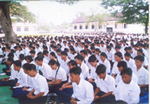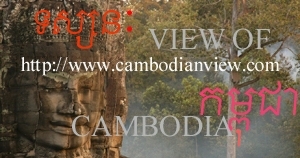


Philosophy
Application Form Old Form, New Form
School Discipline
Volunteer Teachers&Principle
Khmer Culture Attitude
Khmer Alphabets
Love Our Culture
Do's and Don'ts
Khmer Pride
Cambodian Consonants Song (Listen Song)
Final Test Paper(Saturday & Sunday)
Declaration of Test Result
- Lessons Plan 2004
- Lessons Plan 2005(1)
- Full Lessons 2005(1)
- Assessment 2005(1)
- Declaration 2005(1)
Khmer National Poem
Buddhist Saturday School
-Curriculum
-Teachers
-List of Students
Buddhist Sunday School
- Curriculum
- Teachers
- List of Students
Top 7 Dhamma Audios
Audio Link 1
Audio Link 2
Audio Link 3
Audio Link 4
Audio Link 5
Audio Link 6
Audo Link 7
Audio Link 8
New Dhamma Audio
New Dhamma 1
New Dhamma 2
New Dhamma 3
New Dhamma 4
New Dhamma 5
New Dhamma 6
New Dhamma 7
New Dhamma 8
New Dhamma 9
New Dhamma 10
New Dhamma 11
New Dhamma 12
New Dhamma 13
Song of the month
Ven.Sohay & Ven.Pangkhat
1 | 2
| 3 | 4
Other Interesting Audios
Smouth Worship
Triple Gem
Worshipping
Triple Gem
Parita Sutta & Abhidhamma
Khmer in
Canada with their
invaluable culture awareness
Para Pavasutta
Mohori Classical Music
Song Of Cambodians
Khmer Pinpeat Music
Khmer Traditional Musics
1 | 2
| 3 |
4 | 5 |
6 | 7 | 8
| 9 | 10
| 11 | 12
| 13 | 14
| 15 |
Fingers Conflict Poem
Hi
everybody !
Welcome to cambodianview.com page.. Here is your great step to surf this
new homepage. You will be able to experience and learn more about Khmer
and the world through your surfing in here.
Cambodianview.com will satisfy you in fulfiling knowledge about the worldview,
perspectives and vision of Cambodians.
This vision stands on the righteousness. And this righteouness was informed
by Lord Buddha.
So how could Buddhism share the visions for Cambodia and the world to
strengthen its unity, peace, development and true happiness. Also how
could we apply this invaluable treasure of Buddha Dhamma to develop either
peace, or economic, or right view, or right understanding...
This homepage deals with collecting Dhamma Preaching
from various Khmer well-known monks, laypeople,
traditional music, literature, Buddhist academic
articles, Buddhism for beginners, social
activities of Cambodian community, every Khmer
links, news and the rest...
We also, webmasters, apologize for any unconvenience in surfing this homepage.
With Metta Dhamma
Webmaster Group!
Special Links:
Khmer Temple in
Calgary
Cambodian Language School
Authentic Learning Khmer
Watt Khmer In London
Cambodian Meditation Centre
Watt Khmer Samakii Edmonton
Special Thanks to :
- Pen Song Ly
- Pen Kim Lin
- Saramak Keir
You could download
Free Real Audio Player Here !
You could download Free
Acrobat Reader Here!

Khmer Language or Cambodian is one of the main Austroasiatic languages, and has had considerable influence from Sanskrit, Pali. Some of these influences, such as Sanskrit and Pali, come from the influence of Buddhism and Hinduism on Khmer culture; the latter two are the result of linguistic contact and geographic proximity.
The Cambodian language is somewhat unusual among its neighboring countries' languages of Thai, Laotian and Vietnamese in that it is not a tonal language.
Dialects are sometimes quite marked; notable variations are found in speakers from Phnom Penh (the capital city) and Battambong.
(This analysis comes from my observation as a conversant speaker of Cambodian without any background in linguistics).
A notable characteristic of the Phnom Penh accent is a tendency toward slang and laziness in pronunciation, much like American urban slang. For instance, "Phnom Penh" will sometimes be shortened to "m'Penh". Another characteristic of the Phnom Penh accent is observed in words with an "r" subconsonant in the first syllable (that is, where r is the second consonant, as in the English word "bread"). The r is not pronounced, the first consonant is pronounced harder than usual, and the syllable is spoken with a dipping tone much like the "hoi" tone in the Vietnamese language. For example, I have heard the word "dre" (meaning "fish") pronounced "te"; the "d" becomes a "t", and the vowel (long A) begins low and rises in tone.
Written Cambodian is alphabetic like English (and unlike Chinese). Its alphabet consists of two separate categories -- consonants and vowels. Pronunciation is given here in the traditional form (you will need a computer with Khmer fonts to see the letters below). It is also notable that the Cambodian script has fewer vowel symbols than the language has vowel phonemes. Instead, each consonant symbol has two digraphs, each with its own inherent vowel (incidentally making Khmer script an abugida rather than a true alphabet. The actual vowel sound represented is therefore indicated by the combination of the vowel symbol plus the inherent vowel of its associated consonant.
Consonants consists of 33 alphabets
1.- gaw -kaw -go -ko -ngo
2. -jaw -chaw -jo -cho -nyo
3. -daw -taw -do -to -naw
4. -Daw -taw -Do -to -no
----------
-yo -ro -lo -vo -saw - haw -law -aw
Vowels
aa/Ea Ay/EE A/E ew/ew eww/eww
OO/UU O/U
History Of Buddhist Saturday & Sunday School
Buddhist School of either Saturday or Sunday School are processing in various Buddhist countries such as Sri Lanka, Burma, Thailand..etc. This method copied from the Buddhist monk missionary in various European countries that those monk missionaries faced with problems that those people and children are always too busy with their study and works beside of Saturday and Sunday. Now, the Westerns are more interesting in Buddhism and devout themselves as the Buddhists more and more, all these because Buddhism is so challenging with their wisdom, intelligence and modern world.
Follow statistic of Buddhists population only in USA there were 30,000 Buddhists in 1900--- the number of people practicing it sharply rose in the past two decades. There were 200,000 Buddhist in the United States in the mid-70s. The number swelled to 1.8 million by 1995, according to the Encyclopedia Britannica.
Khmer Consonants
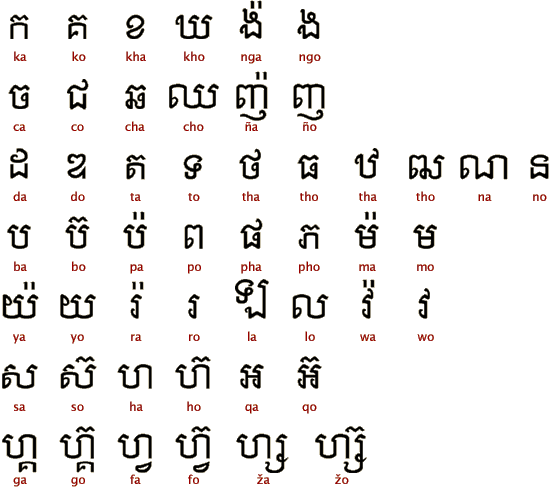
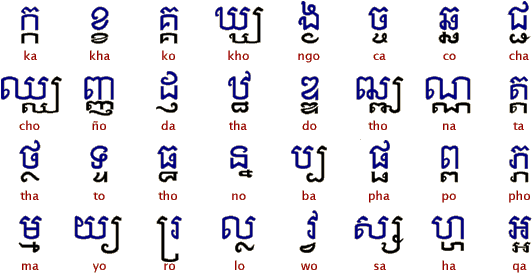
Khmer Vowels
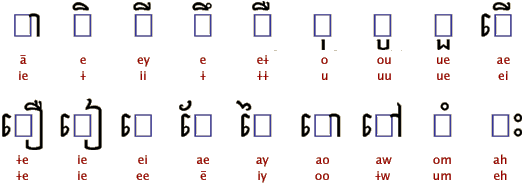
Other Vowels


Khmer Consonants by Grouping
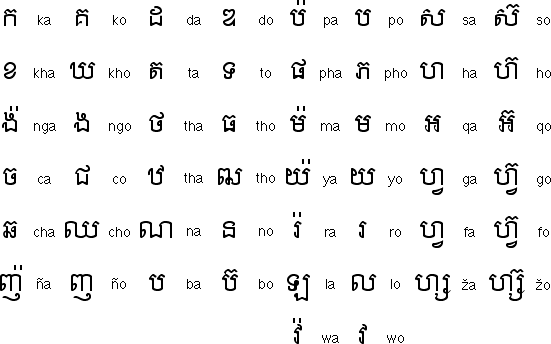
Khmer Vowels by Pronouncing
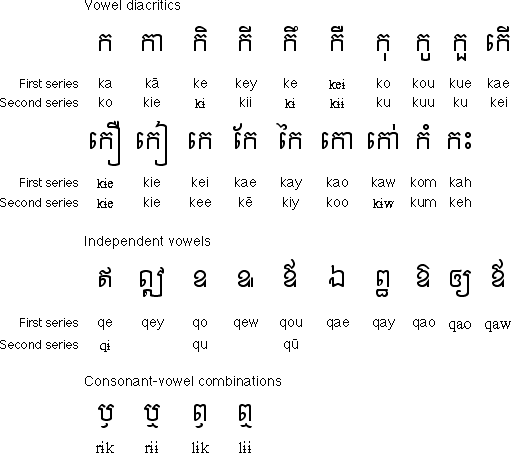
Khmer Numbers

You are our visitor:
Copyright ©August, 2003-2007 Khmer-Canadian Buddhist Cultural Centre.
All Rights Reserved (unless otherwise stated).
Started: Wed, August 13, B.E.2547,A.D.2003, Last Updated:March 27, 2007
